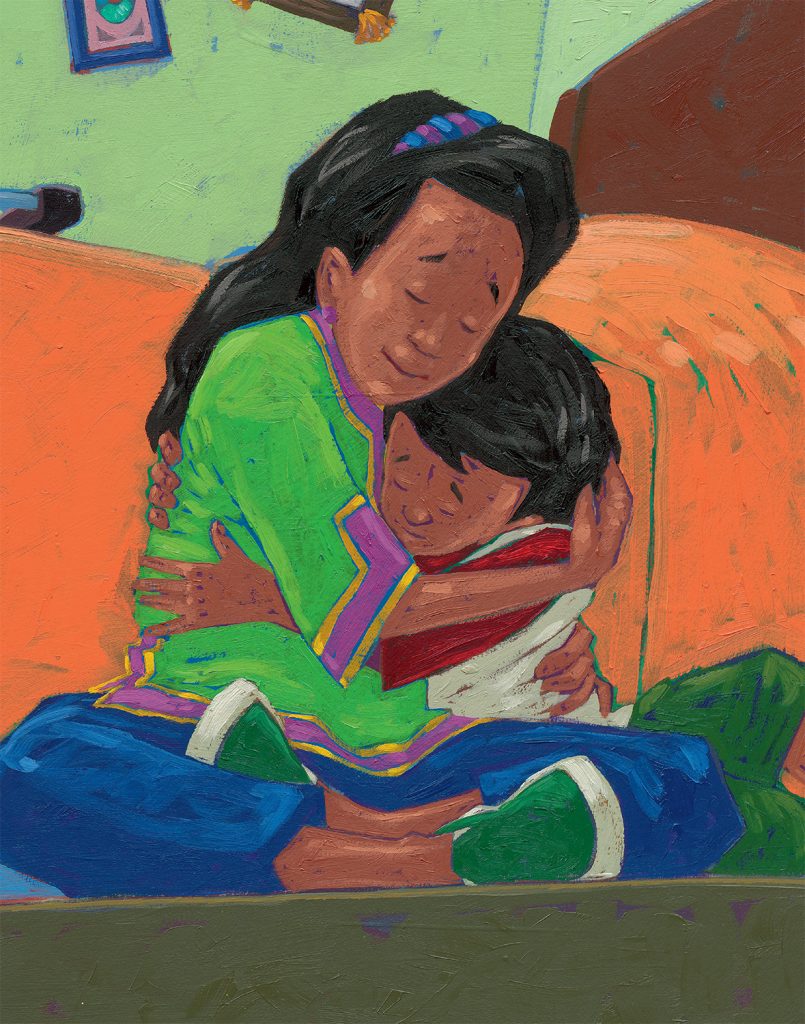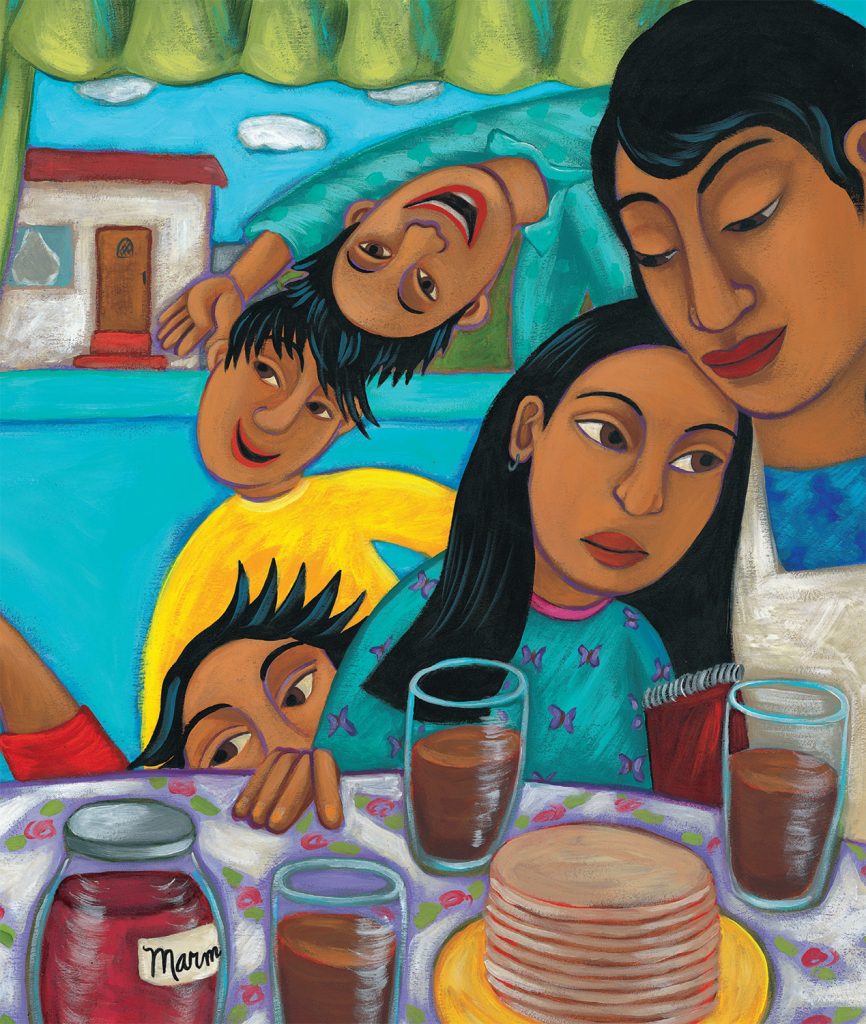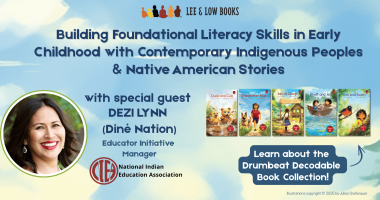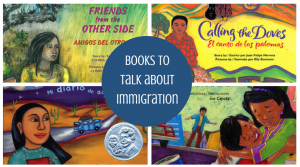As the United States continues to feel the ripple effects of its family separation policy, caretakers are tasked with the difficult job of helping young people make sense of what’s happening—a tall order when we often struggle to understand ourselves. Adults may feel an initial impulse to shield children from today’s news, but we know that this is not a solution, and may instead contribute to more confusion and fear.
So, how can we address this topic in a respectful, honest, and age-appropriate way? Here are a few tips:
- Be realistic: Assume most young people have an idea of what is going on. They may be getting the news from social media, their friends, the evening news, from home.
- Be age-appropriate: Think about differences between children’s ages and the language and type of information they can handle. Tailor your conversations to accommodate age discrepancies in addition to children’s prior knowledge.
- Be honest and direct: Do not sugarcoat or mislead children. Being up front with children is the most responsible and effective way to convey accurate information. Use language that makes sense and is familiar to them.
- Be sensitive and thoughtful: Awareness and acknowledgment of children’s feelings is also of the utmost importance: check in with children and ask them how they are feeling. Encourage children to speak up and voice their concerns.
- Be purposeful: Why are you telling children this information? Think about your objectives and the importance of informing children about these events. Provide context and background information if necessary before diving into the current situation at the border.
- And if you are not the primary caregiver: Be thoughtful on how to recognize parents/caregivers as they navigate this with their children. What will children say after the conversation? How will they relay this information to others in their lives?
Using Books to Facilitate Discussion
Read-alouds are great ways to talk about these topics while being considerate and mindful. The right picture books can:
- introduce sensitive issues through identifiable and relatable characters
- frame events in ways that are suitable to your young audience’s developmental stages and cognitive abilities
- allow young readers to identify with similar-aged main characters over universal themes
- offer young readers words to express what they are feeling or experiencing
- prepare young readers for the world they belong in and will someday lead
 How do you use a picture book to talk with young people about what’s happening at the U.S.–Mexico border?
How do you use a picture book to talk with young people about what’s happening at the U.S.–Mexico border?
- Empathize and identify with the emotions of the characters to humanize these events
- Ask children while reading: why do you think this family had to move? How do you think this character felt when he or she needed to move? Why did he or she feel that way?
We recognize this may be triggering for young people, whether or not they have personally encountered such trauma. Every child reacts differently to distressing news. It’s essential that we acknowledge children’s individual differences, similar to how we accommodate their unique learning needs and interests in our classrooms and libraries.
Recommended Titles
From North to South/Del Norte al Sur
Written by René Colato Laínez, illustrate by Joe Cepeda
José loves helping Mamá, but when Mamá is sent back to Mexico for not having proper papers, José and his Papa face an uncertain future. Author René Colato Laínez tackles the difficult and timely subject of family separation with exquisite tenderness. (Bilingual English/Spanish)
Questions that you can pose:
- Do you have friends or family that live in other countries? How do you stay in touch with them? How often do you get to visit with them?
- Home can mean different things to people. To José, home is being together with his Mamá and Papá. What does home mean to you? How might the word mean more than just the place where you live?
Written and illustrated by Sarah Lynne Reul
When devastating news rattles a young girl’s community, her normally attentive parents and neighbors are suddenly exhausted and distracted. At school, her teachers tells the class to look for the helpers—the good people working to make things better in big and small ways. The Breaking News touches on themes of community, resilience, and optimism with an authenticity that will resonate with readers young and old.
My Diary From Here to There/Mi diario de aqui hasta allá
 Written by Amada Irma Pérez, illustrated by Maya Christina Gonzalez
Written by Amada Irma Pérez, illustrated by Maya Christina Gonzalez
Amada records her fears, hopes and dreams about moving from Mexico to the other side of the border in California in her trusted diary. From Juárez to Mexicali to Tijuana to Los Angeles, Amada learns that with her family’s love and belief in herself, she can make any journey and weather any change. (Bilingual English/Spanish)
Questions that you can pose:
- Have you ever been far away from someone you love, like Amada? How did it feel? What did you do to make yourself feel better? How did that help you?
Friends from the Other Side/Amigos del otro lado
Written by Gloria Anzaldúa, illustrated by Consuelo Méndez
This poignant immigration story captures not only the hardship of daily life on the border but also the beauty of the landscape and the dignity and generosity of spirit that Mexican Americans and Mexican immigrants share (Bilingual English/Spanish)
Questions that you can pose:
- Have you ever helped a friend in need? What did you do for that friend? How did it make that friend feel?
- Have you ever stood up for a friend when he or she needed help? What did you do?
Calling the Doves/El canto de las palomas
Written by Juan Felipe Herrerra, illustrated by Elly Simmons
Calling the Doves is Poet Laureate Juan Felipe Hererra’s story of his migrant farmworker childhood through his perspective as a young boy, told with vibrant language about his mother’s songs and poetry, and his father’s stories and relationship with nature. (Bilingual English/Spanish)
Questions that you can pose:
- Have you ever had to move with your parents? How did you feel?
- What kinds of stories does your family tell?
- Did any of your family members come to this country from another place? Why?
Additional articles to read about the situation at the U.S.–Mexico border:
- ‘I Can’t Go Without MY Son,’ a Mother Pleaded as She Was Deported to Guatemala from the New York Times
- Q&A: Families Separated at The Border from the Los Angeles Times
- Doctors Concerned About ‘Irreparable Harm’ to Separated Migrant Children from NPR
- Teaching on the Border from Teaching Tolerance
- Listen to Children Who’ve Just Been Separated From Their Parents at the Border from ProPublica
What books have met this criteria and helped support discussion for you, your family, or your community? Please help us grow this list by sharing your recommendations in the comments or on Twitter @leeandlow.









